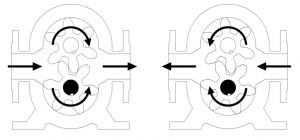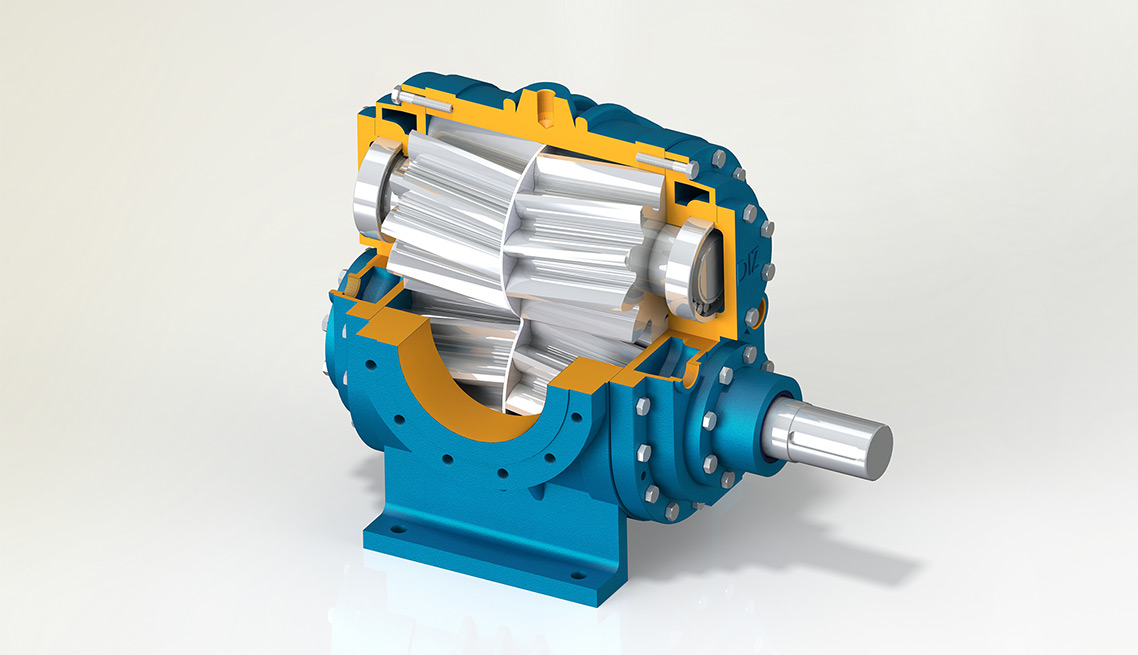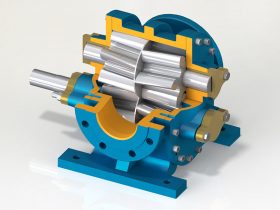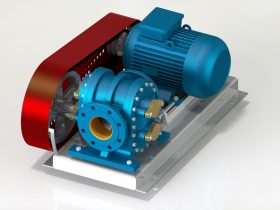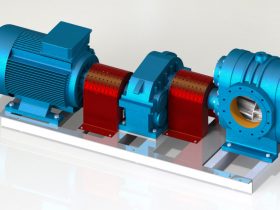HELICAL GEAR PUMP
These pumps work same gear pumps. Pump shaft transmits circular movement with own gear to other gear on inverse side. While gears leave from other, liquid get full between gears. While gears become close, this liquid moves with rotary motion to outlet. We can have pressure until 20 Bar according to liquid viscose.
Also they are good in where there is a need for uninterrupted capacity for less viscous and medium pressure places.
| PUMP PROPERTIES | |
| Q | : 1 – 350 m³/h |
| Hm | : 1 ~ 15 Bar |
| T | : 0 ~ 350 ºC |
| n | : 50 – 1500 rpm |
| Visc. | : 100 ~ 250.000 SSU |
USE AREAS
- Industrial applications
- Transfer of molasses,
- Petroleum,
- Fuel,
- High volume transfer
MATERIAL OPTIONS
- Pump Body, covers and gears: Cast iron, steel cast, stainless AISI 304 / 316 cast,ductile iron.
- Bearings : Snbz 12 bronze, bearing, carbon graphite, ina bushing bearing.
- Sızdırmazlık : Soft seal, mechanical seal.
WORKING PRINCIPLE

Picture on the side illustrates the entrance of space between rotating and rotated gears, passing by pump port. Black arrows shows pump’s rotation direction and progressing of the liquid inside the pump.
Pay attention to liquid progress in the gap between gears’ teeth and pump casing. Liquid is transferred not through the gears, but between each gear and pump casing. This picture illustrates the progress of the liquid up to pump discharge area.
In this figure, liquid is illustrated during filling all pump inner spaces and flowing out of the pump discharge port. Gears’ teeth mesh in and, thus, forces the liquid outside of discharge port.
YILDIZ type pumps rotate clockwise when observed from coupling side. This direction is demonstrated with an arrow label placed on pump. By running for a very short period, pump rotation direction should be checked for following direction of the arrow.
